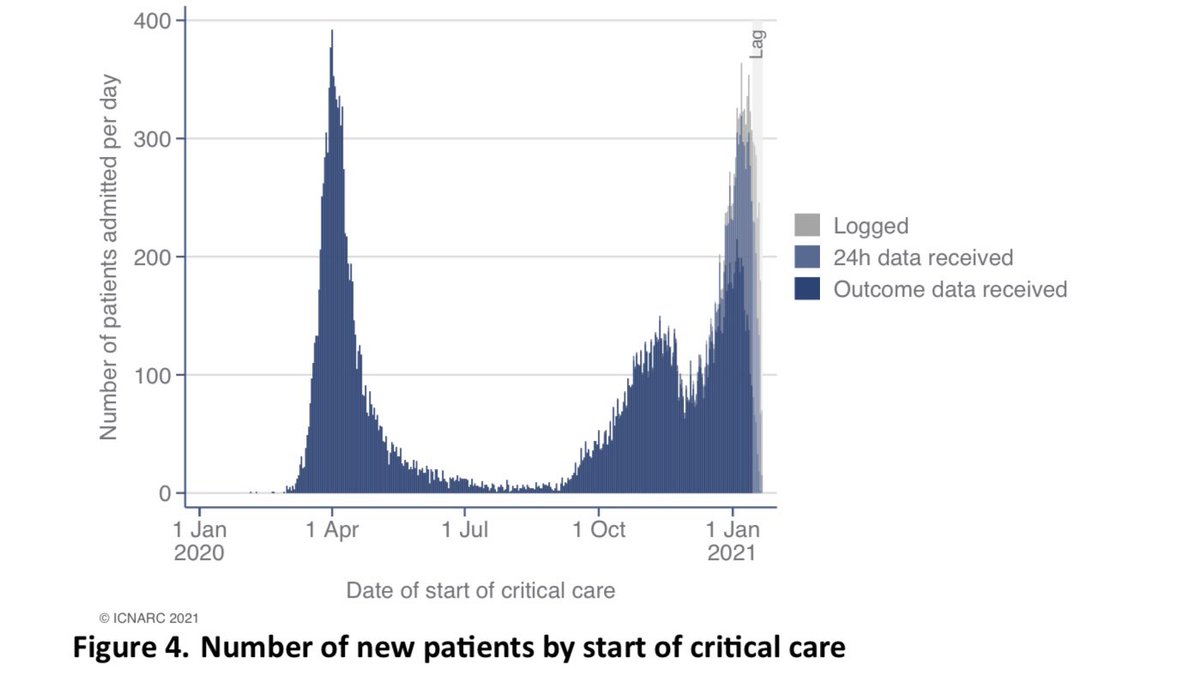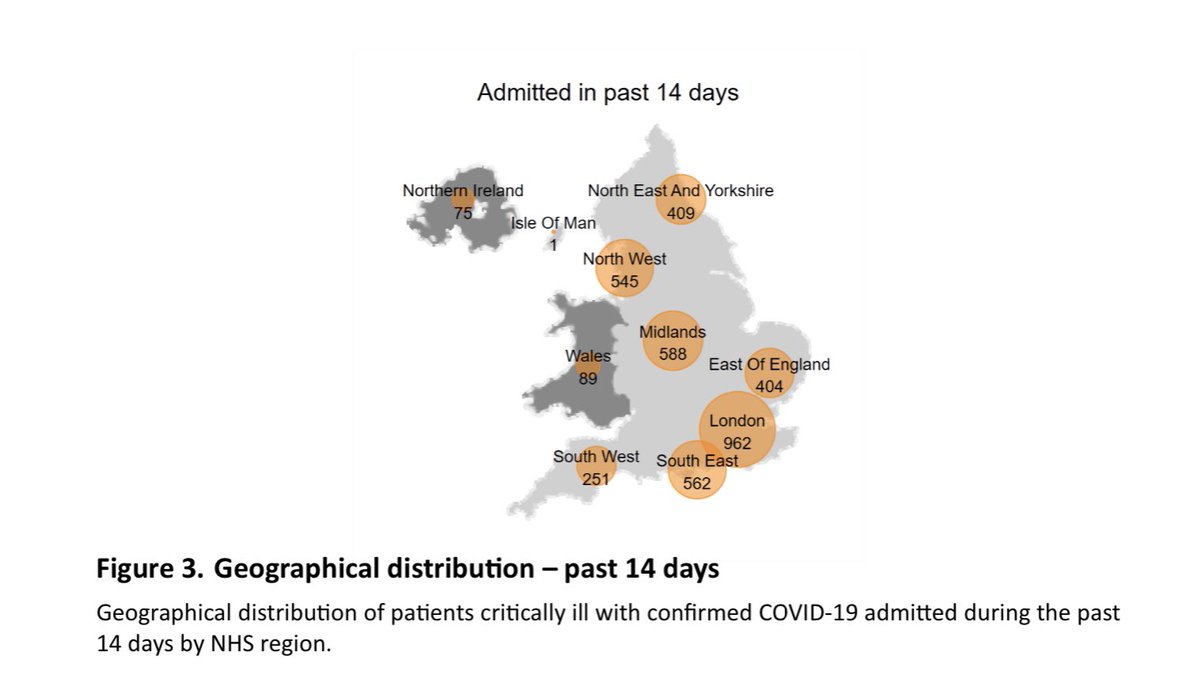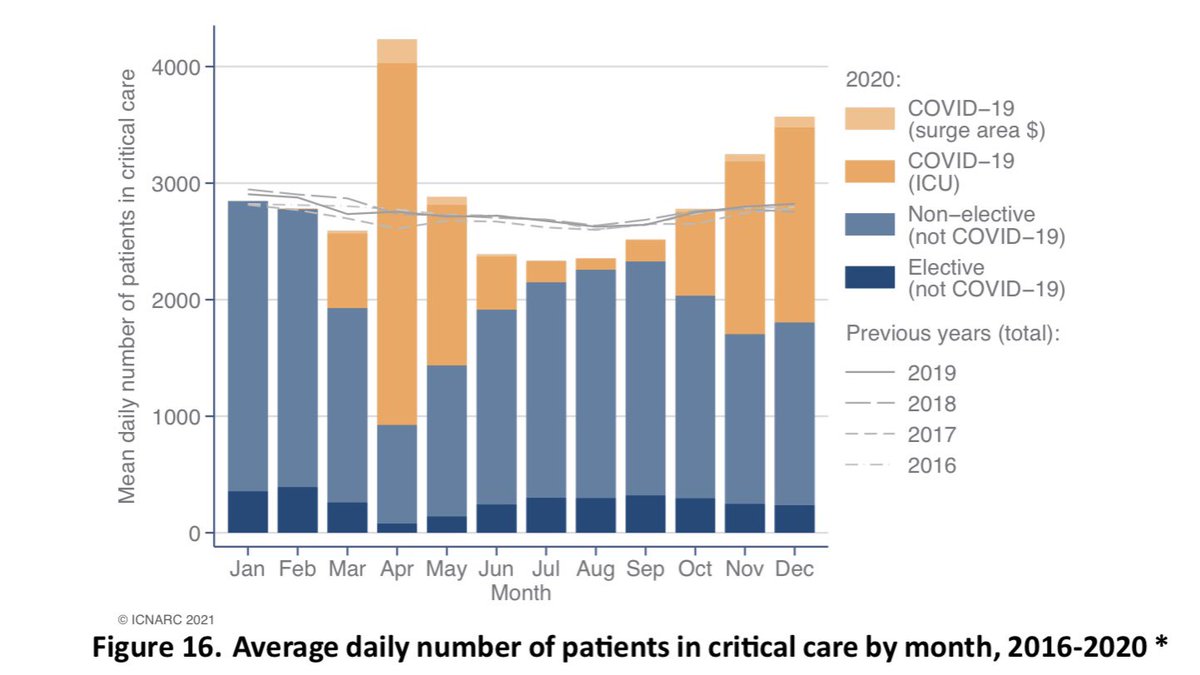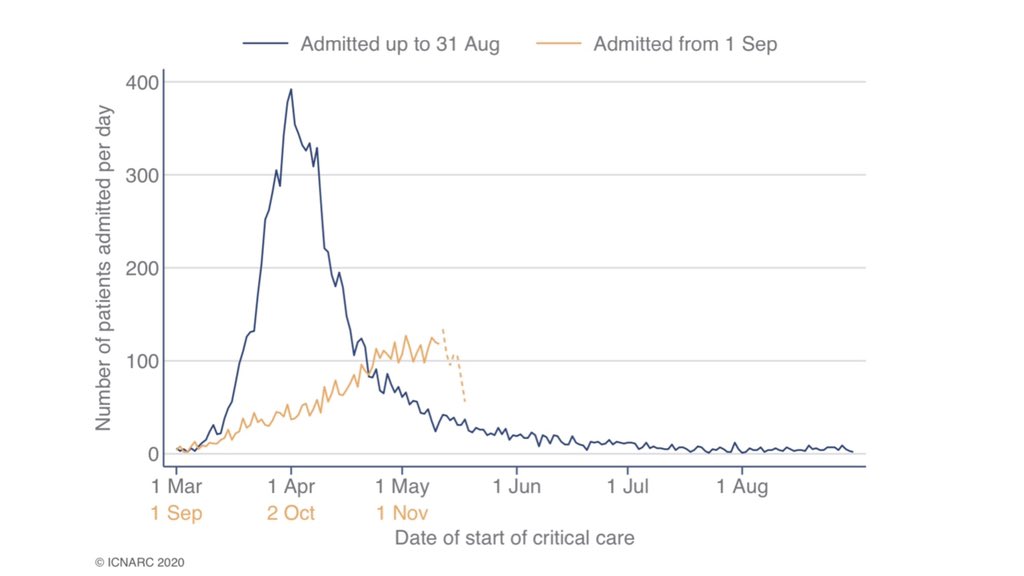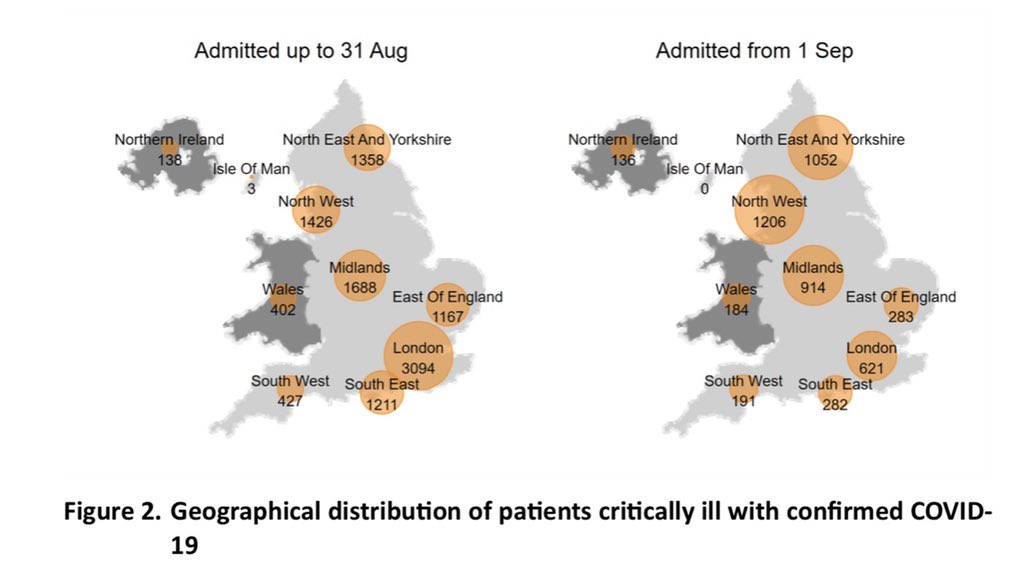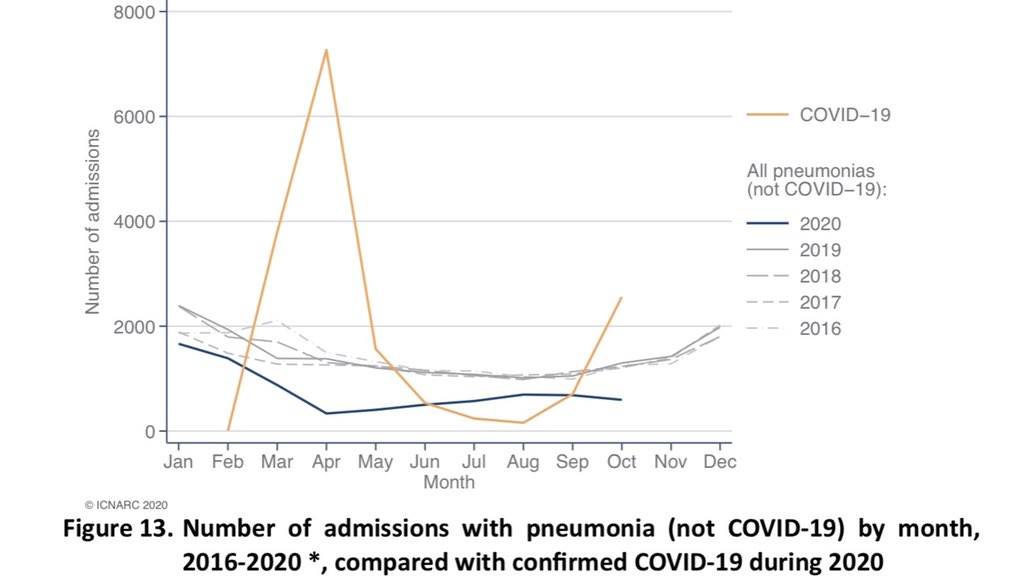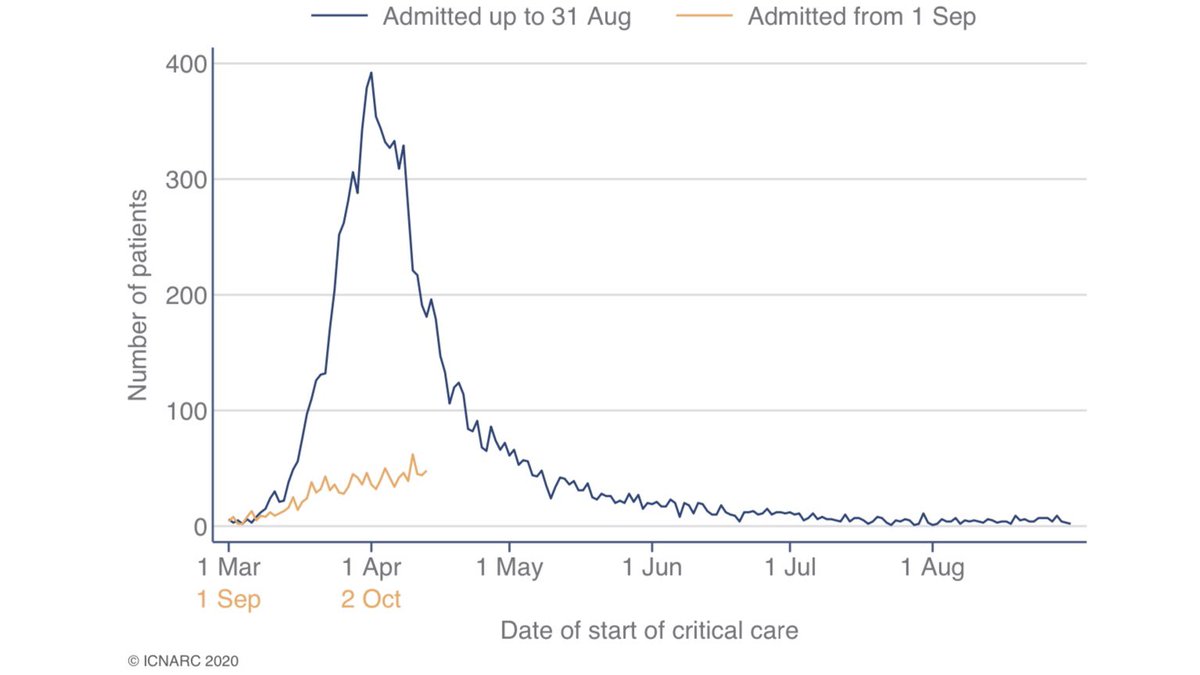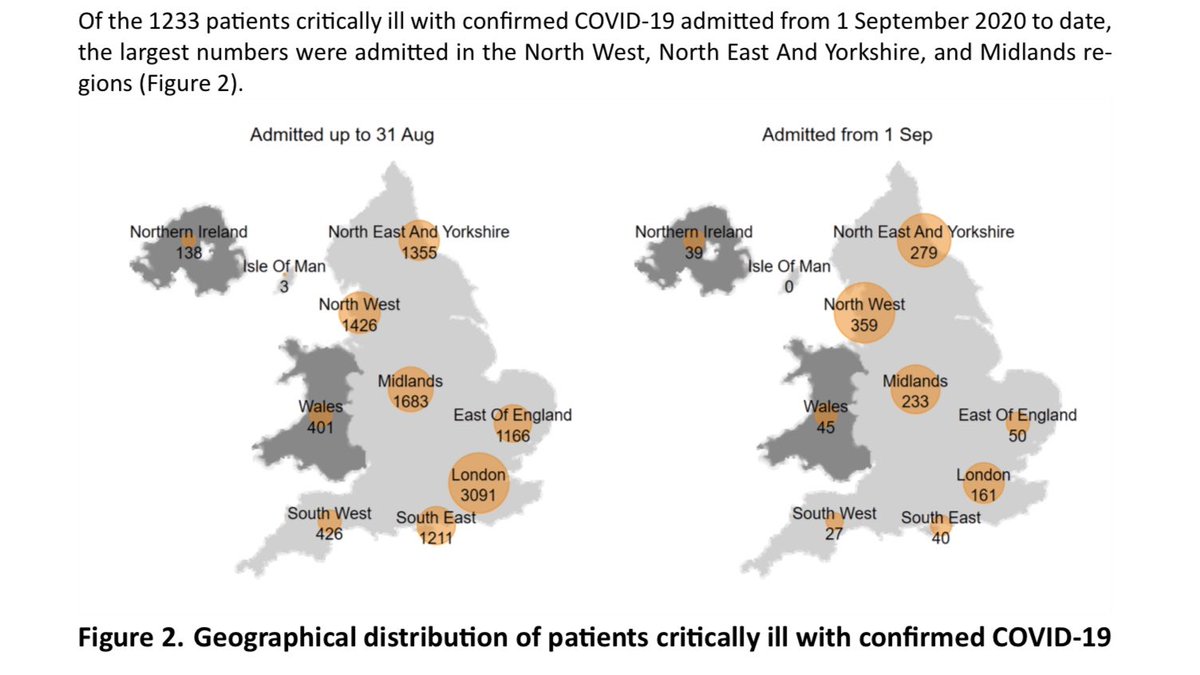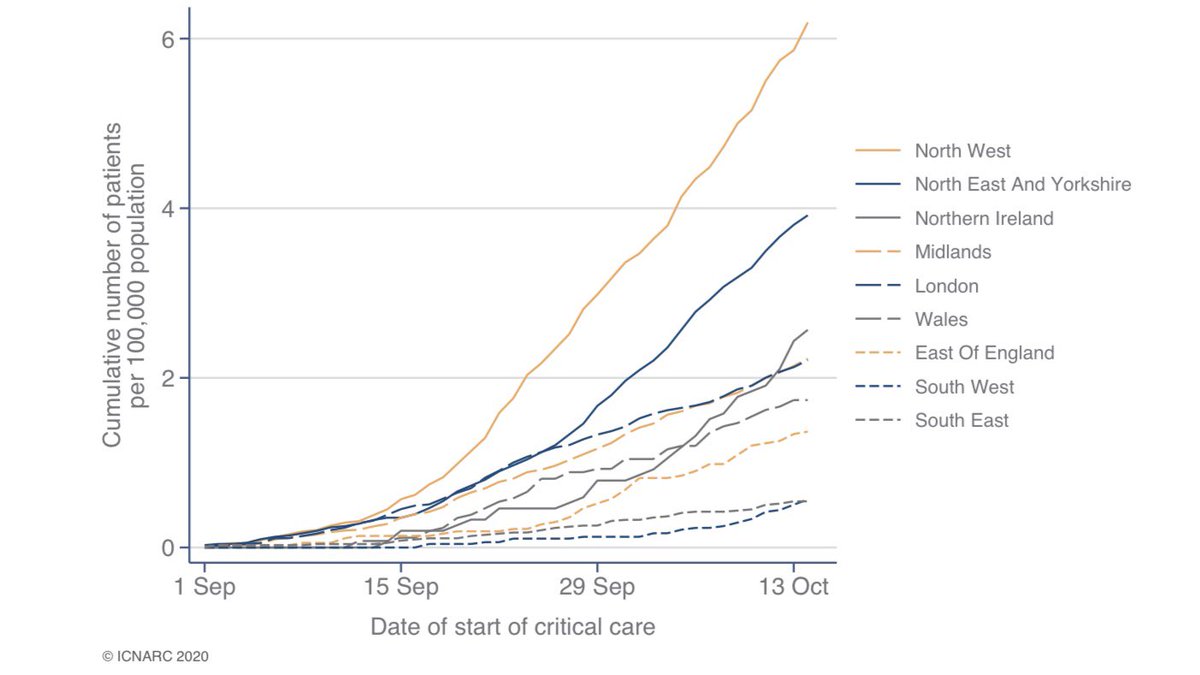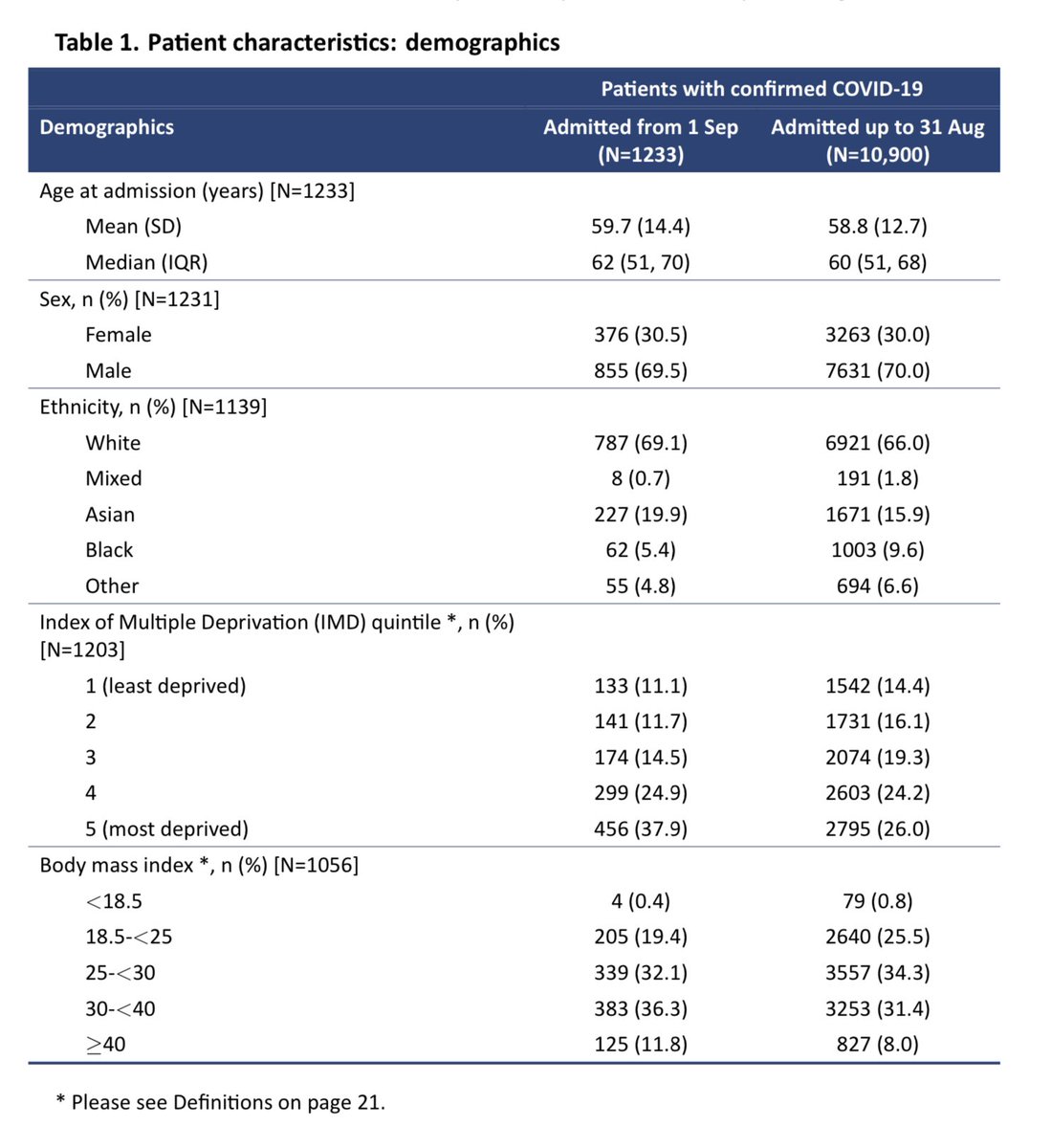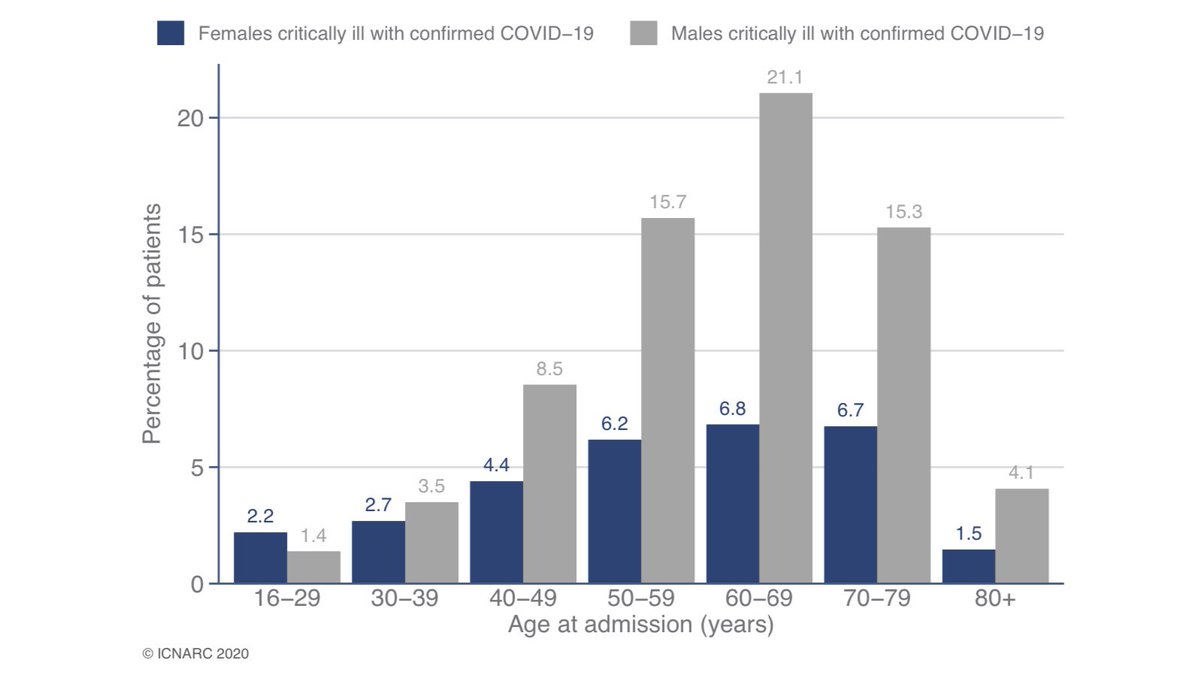
This is a perfectly reasonable question. #VaccinesWork and the UK vaccination effort has been incredible, so why do so many people, including me, feel that unlocking on June 21 is just too much of a risk right now? 🧵 (TLDR: Delta/India variant, cases 📈)
https://twitter.com/theJeremyVine/status/1402853471741743105
With the delta variant now prevalent in the UK, cases are rising exponentially, doubling around every 9 days. I like the way @BristOliver presents these... follow the line to see where the current trajectory takes us. 2/12
https://twitter.com/BristOliver/status/1402643549963919360
As @theJeremyVine notes, vaccines have dramatically reduced the proportion of cases that turn into hospital admissions and deaths. Whilst I’m mindful of concerns around long covid, it’s these more immediate outcomes that underlie the roadmap. I’ll focus on those today. 3/12
Hospital admissions are rising, highlighted yesterday by @COVID19actuary. To date, growth is much slower than for cases. We need to watch this closely over the next couple of weeks to see where it goes. We just won’t have enough data in time for the 21 June decision. 4/12
https://twitter.com/COVID19actuary/status/1402652224128532488
The UK’s vaccination push has been incredible, and all involved should be proud. Nonetheless, 3 out of 5 people remain either unvaccinated or only partially vaccinated (just one dose, or received second very recently). 5/12
https://twitter.com/john_actuary/status/1402615535855091724
The vaccines are great but they are not perfect, particularly against the delta variant. Even if there is 70% protection from one dose and 95% protection from two that has the potential to result in another large wave of hospital admissions and deaths. 6/12
https://twitter.com/jburnmurdoch/status/1402351624480296975
How bad could things get? A well-explained model is the public domain is this by @JamesWard73.
The scenarios below show just how uncertain the current situation is. A huge exit wave of hospitalisations is by no means certain, but in my view the risk is currently too high. 7/12
The scenarios below show just how uncertain the current situation is. A huge exit wave of hospitalisations is by no means certain, but in my view the risk is currently too high. 7/12
https://twitter.com/JamesWard73/status/1401806768519405569
So what can we do? With exponential growth apparent the national policy discussion should consider:
- more restrictions
- stay as we are
- relax restrictions as planned.
Based on the data and modelling I’ve seen I would favour staying as we are for a couple more weeks. 8/12
- more restrictions
- stay as we are
- relax restrictions as planned.
Based on the data and modelling I’ve seen I would favour staying as we are for a couple more weeks. 8/12
Of course more local measures should be discussed given the clear difference between the North West and other parts of the country, but we shouldn’t kid ourselves that the NW situation is unique - they are just ahead of the curve. 9/12
The roadmap out of lockdown has, in my view been a great success. #DataNotDates approach has brought us to a position where hospital numbers and deaths are low, despite the delta variant. We need to be true to that approach and hit the pause button for a couple of weeks. 10/12
As individuals we need to continue to follow the guidance and keep numbers meeting indoors low. Crucially, we need to get the jab as soon as we can. Over 25s can book first jab and over 40s waiting 11-12 weeks for their second AZ jab can bring the date forward here👇. 11/12
https://twitter.com/actuarybyday/status/1401824161908113408
In summary then:
- #VaccinesWork and are saving lives - get both jabs!
- I don’t think more national measures currently needed but we can’t risk opening on 21 June. Tests 3 and 4 are currently questionable.
- Hospital data should be clearer in a couple of weeks.
Stay safe! 12/12
- #VaccinesWork and are saving lives - get both jabs!
- I don’t think more national measures currently needed but we can’t risk opening on 21 June. Tests 3 and 4 are currently questionable.
- Hospital data should be clearer in a couple of weeks.
Stay safe! 12/12
https://twitter.com/kit_yates_maths/status/1393161687054815232
I’ve consolidated the thread into a blogpost here, addressing a couple of comments received tab the same time.
covid-arg.com/post/when-to-t…
covid-arg.com/post/when-to-t…
• • •
Missing some Tweet in this thread? You can try to
force a refresh



